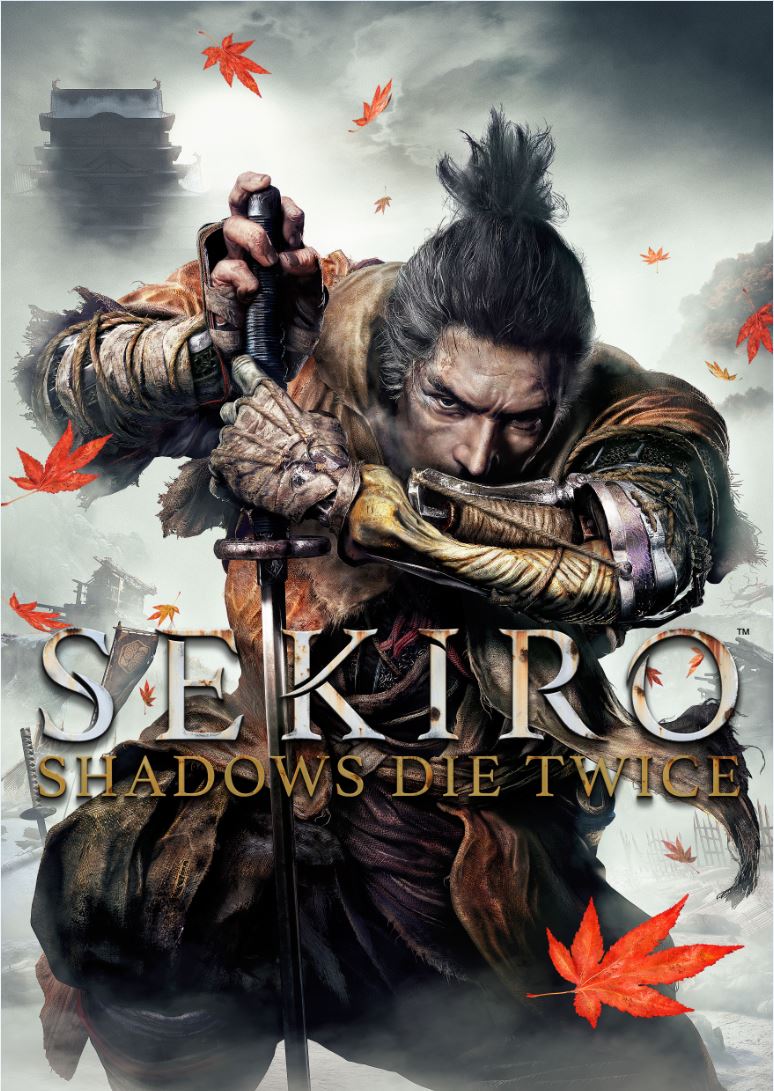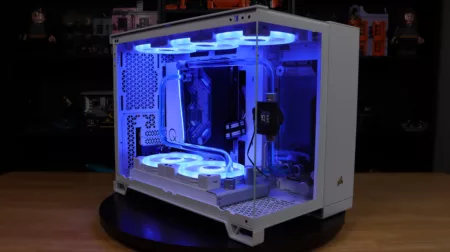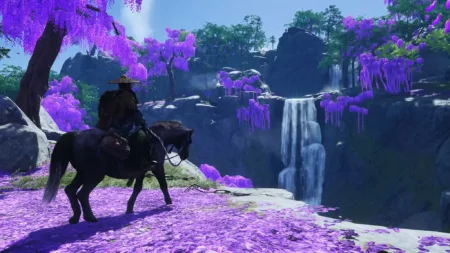Sekiro: Shadows Die Twice is a masterpiece worthy of its lineage. It contains much of the DNA of Dark Souls and Bloodborne, but still manages to make its own mark. A quality game that challenges players while peppering enough advice and even an in-game sparring partner to help you learn the ropes without holding back on the sometimes nightmarish difficulty.

Graphics
Sekiro takes place in a fantasy world dervied from Sengoku-era Japan much like the Keanu Reeves movie 47 Ronin. But before you run away screaming, I am happy to inform you that this time, the setting works. Mythical creatures, grotesque monsters, and humans live side-by-side in this world that is equal parts pretty and ugly.
The graphics clearly state the mood and I consider it one of the best in this generation. The character models evoke feelings of nostalgia as they remind the gamer (if he or she is old enough) of the classic PS One game, Tenchu. The environment is also beautiful, especially when you look at the surrounding mountains or go through a field with tall grass. The way the light shines on the characters can make for very dramatic screen-shots. Yes, the overall palette is dark, but there is beauty in that darkness.

At the same time, it is very dirty, perfectly in tune with the setting which is supposed to be that of a country in continuous conflict. Many period shows and even video games depict that part of Japanese history with bright colors and pristine settings. Not this game. The grit is almost Game of Thrones-like in quality, and the violence is just as gratuitous.

Much of the gameplay (more on that later) is dependent on visual cues where you sometimes need to react in a split-second. To that end, the animation is consistently smooth. I have not experienced a frame-rate drop during the long hours I played the game (I played on a fat PS4).
My only problem is that the camera can be a chore to adjust during exploration, especially when it comes to locating enemies. Unlike most modern stealth/action games, Sekiro does not “mark” the enemies. It’s not like they walk in complex patterns anyway, but it can still make things difficult for you especially if you just want to play stealthy.

Sound
The game’s music has a haunting quality to it that is reminiscent of old Akira Kurosawa films. I know a lot of traditional Japanese music in games are cliche, but the effect is enhanced by the inclusion of Japanese language audio. It really makes me remember watching “The Seven Samurai”, with the mixture of the musical score and Japanese voice-acting.

That is not to say that the english voice cast is not as effective. It is. It is pretty rare these days to have both English and Japanese audio in a game where both are just as good and effective. The only difference is that while the Japanese audio reminds me of period-era films, the english voice-acting reminded me of Game of Thrones. The sound-effects are also just as good. Every clash of metal against metal gets the adrenaline pumping in my blood especially with a very tricky opponent. The death-blows providing a particularly gory sound that I haven’t heard since the game Shinobido way back in the PS2.

Gameplay
Sekiro offers thrilling gameplay that is reminiscent of other From Software games but are not copy-and-paste either. In fact, Sekiro offers a lot of elements that can be seen as an improvement over Dark Souls and Bloodborne, starting with the ability to pause, whether to take a breather, or to strategize your next move.
Let’s face it: we all knew the game will be hard starting from when we found out that it is being developed by From Software. And the game knows this too, as not only does it pepper the game with useful tips, it also has its own integrated training mode in the person of Hanbei the Immortal. While Hanbei himself isn’t as tough as most bosses, training with him allows you to hone your reflexes to better respond to the demands of Sekiro’s combat which is not only challenging, but surprisingly deep as well.

The purpose of combat is breaking the enemy’s posture, whether by deflecting his sword strikes, or maneauvering around him to score a hit. Deflecting is a very important skill to master, as once you deflect a blow, the enemy, will be left open for a death blow (prompted by a red dot on the enemy). Higher tier enemies need to be given the killing strike more than once, but that is to be expected.

Also, the various levels of enemy posseses different combat styles to make the challenge more varied. Samurai mid-bosses can be expected to be well-rounded adversaries, while certain boss types have their unique skill set. All boss types possess at least one (or in Samurai, all three) of the these three special moves namely the thrust, sweep, or grab. Only a deflect can defeat a thrust, sweep can be defeated by jumping, while a grab must be avoided by side-stepping away.

Certain enemy types move and attack differently. Some enemies do multiple strikes that force you to hunker down and block if you miss deflecting the first cut. All of the basic moves (attacking, deflecting, blocking, dodging, and jumping) will come into play in most – if not all – battles. At first Sekiro’s attacks will only be as damaging as the average NPC. But as you gain experience, he can level-up and learn crucial skills that can mean the difference between life and death.

You can develop Sekiro’s combat and shinobi skills buy using EXP points to “buy” them. As Sekiro grows strong, he learns moves that can be useful when he is fighting multiple enemies, make him more stealthy, and allow him to do multiple death blows. It is an RPG-like system that is currently all the rage in action/adventure games. The difference here is that unlike RPGs that opens skills as you progress in the story, Sekiro allows the player to grind it out even in the first area to unlock and obtain certain skills.

Dark Souls was all about the grind, and Sekiro seems to have inherited it. The difference here is that the game actually helps you to grind. Killing enemies earn you points, while dying halves it (and any money you may have). A dedicated grinder can kill all the mooks to farm EXP, and then find a Buddha statue to rest and replenish your stock….after which those same guards are revived.

Buddha statues actually make your game more tolerable as they serve as fast-travel points, rest points that replenish health and resurrection, stock up on the health gourd. I found that these statues actually encourage me to strategize my grind. As I acquire more skills, certain enemies became a lot easier to handle (although they can still destroy you if you are not careful).

Another crucial mechanic is the shinobi prosthetic arm that you will acquire early on. Reminiscent of Tenchu’s grappling hook, the prosthetic has tons of uses, not just as a means of travel. It equips Sekiro with new weapons for specific purposes, but also allows you to use it as you see fit. The grappling arm also allows you to escape a fight you are about to lose, as well as getting away from enemies much quicker.
The difference between Sekiro and Tenchu’s grappling hooks is that the former can only latch on specific spots. There are areas that will indicate where a grappling hook can be used. It is important to take note of these especially during a fight as it is a quick escape.

Since the titular character is a shinobi, stealth figures a lot in the game. Toggling the crouch position makes you a bit more difficult to detect, and most of the time you can use it to sneak past your opponents and kill them stealthily. Again, the lack of an ability to mark your opponents force you to really be careful about rushing to an enemy in an alley-way.
Although this may seem a bit more difficult at first, there is a real incentive towards picking your fights, and not just because the game’s difficulty is brutal. Like I said, dying halves EXP and Sen (in-game money), which you will need to quickly power-up. Sometimes, it is better to scout an area, and then try to pick the enemy off one by one, or eschew killing them all until much, much later.

The stealth mechanic isn’t perfect, however. Most of the times the camera gets in the way. Although it adds to the suspense, there are areas wherein there’s literally no other way but to show yourself to the enemy and hope your skills are sufficient to kill them all, or at least rush towards a safe area, preferrably a stone buddha where you can rest and refill your health and life gourd. You will find yourself doing exactly that, until either your character learns more powerful skills, or until the controls become second nature to you, whichever comes first.

Fun-Factor
For a game, Sekiro is fun, has high replay value, challenging on all the right spots, and delivers on the story very well. Although many enemies are revived each and every time you rest to refill your health bar, your resurrection slots, and health gourd, this is balanced by the fact that the Buddha statues you can use as fast-travel points are strategically peppered throughout the area. If you choose so, you can skip to the area nearest to your destination, although I preferred to back-track when I was still grinding for experience.

Sure, the game is designed to be naturally hard, but unlike other games where I usually get frustrated after the tenth death, in Sekiro, I am challenged to try again and perfect my technique. The game KNOWS that it is hard, and makes no excuse for it. But it also provides you with ample tools and opportunities to learn the combat system and to survive. It always provides the players with hints that are very useful in keeping you from your second death, especially since dying too much ties into the story narrative.

In an era where ninja games are rarely made in the mold of the beloved Tenchu series, Sekiro scores big in presenting a more mature take on the genre. While the character itself is implied to be a particularly gifted Shinobi early on, Sekiro spends most of the game trying to regain his skills and memories, thereby making him at times the weakest character in the room. It is a far-cry from the times of Rikimaru and Ayame who are both the strongest characters in the entire game except for the final boss.

To be fair, none of these concepts are original: the Shinobi with memory problems has been done before in Shinobido, and even Tenchu 2 featured Tatsumaru, with the same psychological issues. It is just that in Sekiro, they’re not really that important to the main plot. Sekiro still knows who he is and what his mission is supposed to be. He just doesn’t remember some things and even events that the game’s NPCs sometimes imply that he should have played a part in.
This is when I started to get sucked in to the lore of the game. There’s a lot to unpack, and the plot is as murky and gray as a Game of Thrones episode. The same is also true of the violence in it. My favorite moment was later in the game where you will be made a choice between loyalty to your code, or loyalty to your master. Violence will still come whatever choice you make, but the implications will be very clear.

Summary
Sekiro Shadows Die Twice is truly one of the great games during the twilight of the current generation of consoles. It’s learning curve is steep, and the difficulty is very high, but it also does not wholly abandon you to your fate. It is a game that makes its players strive for perfection in their technique, teaching them how to move away from button-mashing and settling into a new timing-based play. And with a storytelling and approach that is a great fusion of Western and Japanese story-telling, Sekiro: Shadows Die Twice is a great game for the serious gamer.







1 Comment
I was only able to play Bloodborne among the games from this developer. The lore took the gaming experience to a different level. I’ll try this soon. Hope I can finish it hahahaha awesome review.